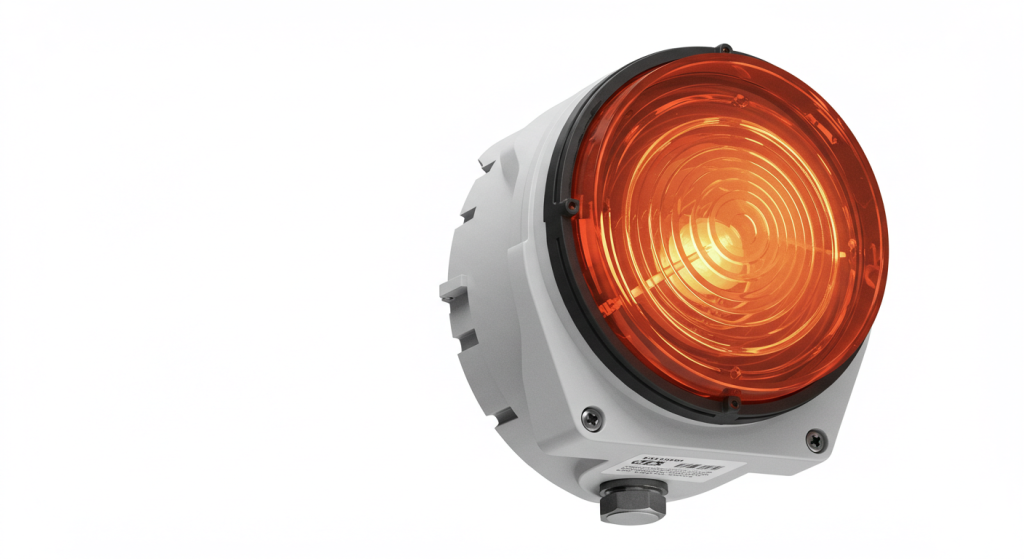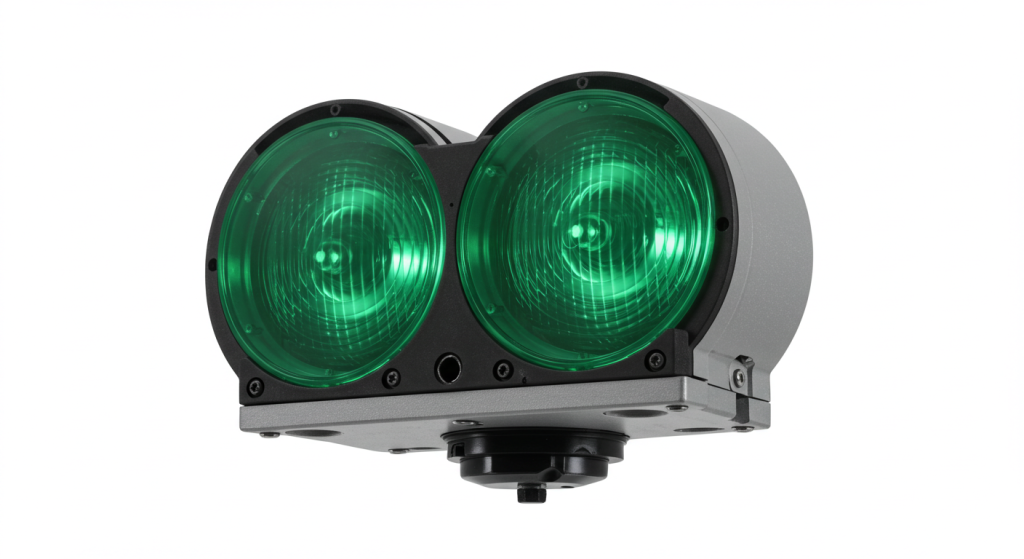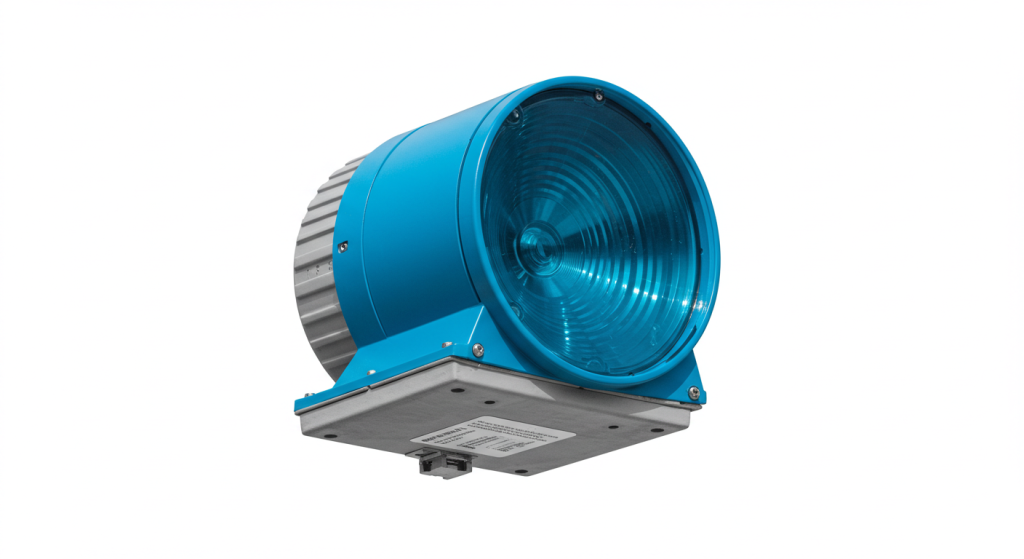In the aviation industry, the safety of low altitude flight is crucial, and the FAA (Federal Aviation Administration) obstacle lighting system serves as a key navigation aid, like a guardian star in the night sky, illuminating the path for aircraft to avoid ground obstacles. Whether it is towering skyscrapers, giant bridges spanning rivers, or towering communication towers in remote areas, once these obstacles are near the takeoff and landing routes or low altitude flight paths of aircraft, without precise and effective obstacle lighting, they are highly likely to cause catastrophic consequences.

Types and Characteristics of FAA Obstacle Lighting
The obstacle lighting regulated by FAA is divided into various types based on different scenes, obstacle heights, and characteristics. Among them, the most common is high-intensity obstacle lights, usually installed at the top of ultra-high obstacles, such as buildings or towers over 150 meters high. This type of light can emit a strong white flash at night, with a peak brightness of millions of candela. Even in long-distance and complex weather conditions, pilots can capture its signal at a glance, and the warning effect is significant. High intensity obstacle lights generally use a pulsed light emission mode, flashing at a specific frequency, such as 40-60 flashes per minute, to ensure visibility without causing visual fatigue or glare interference to pilots due to sustained strong light.
Medium intensity obstacle lights are suitable for obstacles with a height of 50-150 meters, with moderate luminous intensity, mostly white or red constant light or flashing light. White light is used to enhance visibility during the day, while red flashing light works at night and in low visibility conditions. Its flashing frequency is usually 20-40 times per minute. In densely populated urban areas, numerous medium intensity lights flash in an orderly manner, outlining a clear “safety outline” for low altitude.
Low intensity obstacle lights are designed for shorter obstacles, such as small industrial chimneys, utility poles, etc., with a height of less than 50 meters. It emits a soft red constant light that stays on throughout the night, with low power consumption. Although the light is not as dazzling as the previous two, its continuous and stable characteristics allow pilots to easily recognize it during low altitude slow flight or hovering, providing fine guidance for subtle operations in near ground flight.

Technical standards and design points
From a technical perspective, the FAA has strict requirements for the illumination angle of obstacle lighting. To achieve all-round warning, the lighting fixtures need to have a wide beam angle and a horizontal coverage of 360 degrees, ensuring that aircraft approaching from all directions can receive signals; The vertical beam angle is finely tuned based on the height of obstacles and the characteristics of the surrounding airspace. The vertical beam of high-level obstacle lamps is narrower, focusing on long-range warning, while the lower level is relatively wider, taking into account the needs of low altitude multi angle observation.
In terms of optical material selection, special glass or acrylic lampshades with high transparency and strong weather resistance are often used, which can efficiently transmit light and resist UV rays, extreme temperature differences, and wind erosion, ensuring that the optical performance of the lamp does not deteriorate during long-term outdoor use. The light source inside the lamp body has undergone changes, gradually evolving from early halogen lamps to today’s energy-efficient LED light sources. LED has become mainstream due to its high brightness, low power consumption, and long lifespan advantages. With precise driving circuits and heat dissipation design, its luminous stability and reliability are greatly improved, reducing the impact of frequent maintenance on the continuity of aviation warning.
The power supply system is the “heart” that ensures the stable operation of obstacle lighting. Most important obstacle lighting is equipped with dual mains power supply, automatic switching, supplemented by uninterruptible power supply (UPS), to ensure seamless connection of UPS in case of mains power interruption and maintain lighting for several hours; In remote areas, solar panels and battery energy storage are combined for power supply, intelligent charging and discharging control is used, and clean energy is utilized to ensure uninterrupted operation of lighting fixtures throughout the year without grid coverage, adapting to various complex geographical environments.
Installation specifications and layout principles
The installation height is directly related to the lighting effect. FAA standards require precise measurement of the actual height of obstacles, and the installation position of lamps is determined proportionally from the top, with errors controlled within a very small range. For example, high-rise buildings often install high-intensity lights at multiple points on the top, middle, and surrounding protruding structures, forming a three-dimensional warning layout; The medium intensity lights of mid-level obstacles are evenly distributed at certain intervals between floors or heights to enhance vertical visibility; Low rise facilities can be equipped with low light intensity lights prominently at the top.
In terms of horizontal layout, for obstacles with regular shapes, lighting fixtures are arranged equidistant around the perimeter to ensure balanced warning in all directions; Irregular shapes such as L-shaped building corners and irregular tower structures are densely arranged based on potential conflict points between protruding parts and flight paths to fill visual blind spots. Moreover, for obstacles near airports and densely populated areas, the lighting layout also needs to be optimized based on the flight procedures and dynamic takeoff and landing routes provided by the air traffic control department to avoid confusion or interference with pilot judgment between lighting and airport navigation lights.

FAA obstacle lighting and international collaboration
Global aviation inter connectivity, FAA obstacle lighting standards and International Civil Aviation Organization (ICAO) regulations work together and have their own unique features. ICAO has developed general guidelines, which are implemented by each country based on their own airspace characteristics and geographical environment. FAA standards, based on the developed experience of the US aviation industry, serve as a reference for multiple countries in areas such as luminous intensity grading and complex environmental adaptability design. In the regions involved in cross-border flight routes, countries follow unified obstacle light colors and basic flashing frequency standards to ensure visual cognitive coherence for pilots during cross-border flights; At the same time, through the international aviation exchange platform, we will continue to optimize the differences, such as the adaptive adjustment of lighting in polar and high-altitude areas, to promote the standardization and precision of global obstacle lighting, and provide consistent and reliable light signal guidance for every low altitude crossing of national borders.
Maintenance Management and Future Prospects
Regular maintenance is the key to maintaining the vitality of obstacle lighting systems. A professional team conducts inspections in accordance with FAA requirements, checking the lighting, electrical connections, power supply, and other conditions of the lamps. They promptly clean the dust on the lampshade, replace aging parts, and use remote monitoring technology to monitor the operating parameters of the lamps in real time, issue fault warnings, and repair them as soon as possible. Moreover, with the rise of new formats such as drone low altitude logistics and sightseeing flights, the density of low altitude flights in cities has increased. The FAA continues to conduct forward-looking research and explore intelligent adaptive lighting technology, dynamically adjusting the brightness and flashing mode of lamps based on real-time low altitude flow, reducing light pollution and strengthening warnings in key areas; Integrating the Internet of Things and big data to build a more intelligent global obstacle lighting control network, allowing each light to accurately serve low altitude flight, continuously lighting up the boundless night sky for aviation safety, and ensuring smooth passage of aircraft between heaven and earth. In short, the FAA obstacle lighting system, with its rigorous and scientific classification, exquisite technology, and standardized installation and operation, has become an unbreakable defense line for low altitude flight safety, guarding every takeoff and landing, and every low altitude journey.